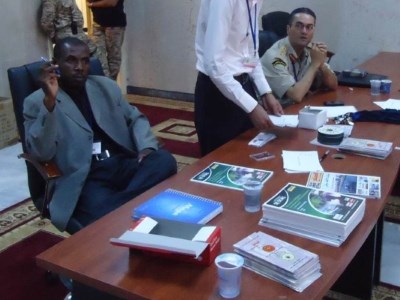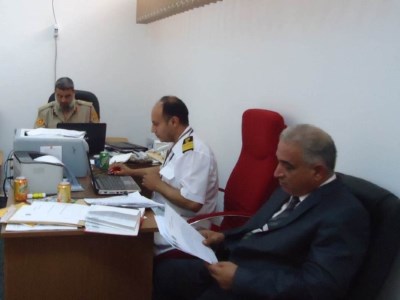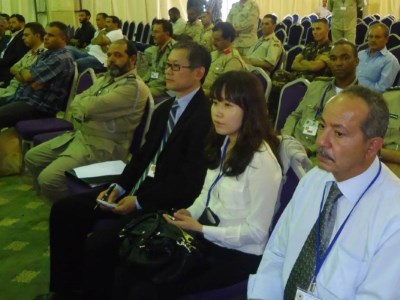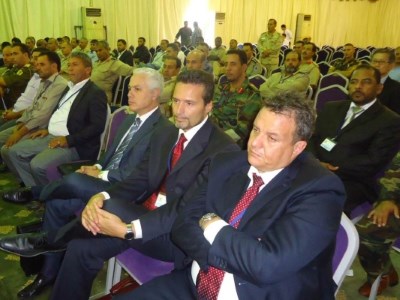Today anniversary of the founding of the Libyan Army, the culmination of Libyan aspirations to establish army that would serve as the nucleus of the National Army. Eighty-five years have passed since the formation of the Senussi Army
which over time became the nucleus for the launch of the Libyan Army, it was created by exceptional men, We must not forget their sacrifices for their beloved homeland.
The following is a chronology of the decisive events in the journey of the formation of the Libyan Army, chronologically:
October 20, 1939:
Prince Idris al-Senussi called for a meeting at his home in Alexandria on October 20, 1939, to address the repercussions of World War II. The meeting was attended by 40 Libyan leaders and chieftains residing in Egypt.
August 7, 1940:
Prince Idris invited another meeting in Cairo. This meeting lasted three days and concluded with Idris al-Senussi being authorized to negotiate with the British government regarding the formation of an army tasked with participating in the liberation of Libya.

August 9, 1940:
The Libyan Senussi Army was established. The Allied forces renamed this army the "Libyan Arab Force." Among Libyans, it was known as the "Senussi Army," the "Liberation Army," and the "Al-Murabit Army." It was under the banner and command of Prince Idris al-Senussi, authorized by the Libyans who had decided to enter the war alongside the Allies to liberate the country and expel the Italian colonizer from Libya. The Allied forces included Britain, the United States, and France. The formation of the army began at the Abu Rawash camp to train Libyan volunteers emigrating to Egypt. The army adopted its own battle banner, a black rectangle with a crescent and a star in the center. The announcement of the formation of a Libyan army in Egyptian territory restored hope to the Libyan people of liberating their stolen homeland. However, the founding process was arduous and arduous, especially given the lack of resources and limited numbers. It was also difficult due to the obstacles it faced, stemming from differences of opinion.
In fact, tracing the contributions of the Senussi Army to the war effort requires recounting the history of the battles that took place during World War II in the Western Desert and the Cyrenaica region. However, it can be said in general terms that the contributions of the Senussi Army in the battles that took place were major and effective, perhaps exceeding its size and capabilities.
After the end of the World War, the men of the Libyan Army played a very important role. They formed trained cadres capable of undertaking administrative tasks in a country that suffered from extreme poverty and a lack of experience, and was still shaking off the burdens of years of brutal Italian colonialism. Army units were transformed into police forces tasked with maintaining security, known as the "Barqa Defense Force." The small battalions of the Libyan Army that participated in the liberation of Libya formed the nucleus of the modern Libyan Army.
December 24, 1951:
After independence, the Libyan government began activating the army and sending military missions abroad.

August 9, 1952:
The official announcement of the establishment of the Libyan Army was made. This date once again commemorates the founding of the new Libyan Army after independence.
Joining the army was voluntary, with a maximum of five years and a maximum of seven. In 1967, Libya began implementing a system of compulsory conscription based on year of birth, beginning at the age of 18. All young men were required to serve in the army for 18 months. However, this system, which Colonel Saleh Al-Azabi was appointed to manage, was not implemented.
In 1953:
The government established a military school in the city of Zawiya to quickly graduate batches of officers pending the return of those sent abroad.
In early 1955:
The formation of a modern, regular Libyan army began, but it was small in size, with no more than 2,000 soldiers and officers.
In 1957:
The Royal Military College was opened in Benghazi, Libya's first academic military institution. In subsequent years, several military schools were established for advanced specialized training (communications, transportation and machinery, infantry, artillery, field engineering, and armor).
November 1962:
The Libyan Naval Force was formed under the command of Major Sailor Mansour Badr.
August 1963:
The Libyan Air Force was formed under the command of Lieutenant Colonel Pilot Al-Hadi Al-Hasoumi.
In 1968:
An air defense unit was established.
In its early modern formation, the Libyan army was influenced by expertise acquired from the Iraqi army, which enjoyed a great reputation and was considered one of the best Arab armies in terms of training, organization, and discipline. It was also influenced by both the Egyptian and Iraqi armies, both of which were modeled after the British military. However, the Iraqi army's influence was most prominent, whether in terms of terminology, training, or rules of military discipline and organization. This is due to several factors, such as the Libyan army's use of expertise from the Iraqi army through Iraqi military missions that oversaw the establishment of the Libyan army and the development of its initial systems. These concepts also contributed to the establishment of these concepts. Furthermore, a large number of Libyan army officers graduated from the Iraqi Royal Military College, which, upon its establishment, made the Royal Libyan Military College follow the same Iraqi model. The college's first commanders and a number of its instructors were Iraqi officers.
After September 1969:
The Libyan army entered a completely new phase, becoming one of the most powerful armies in the Arab and African region in terms of organization, armament, equipment, and supplies.
After February 2011:
Following the overthrow of the Gaddafi regime and the outbreak of a new civil war in 2014, the regular Libyan army split and remains divided to this day under two names (the Libyan Army and the Libyan Arab Armed Forces). Both fought various terrorist factions that emerged in the country, as well as terrorist groups such as the Islamic State (ISIS) in Sirte, Benghazi, and southern Libya.
Amidst the country's political disputes and power struggles, the Libyan army remains one of the most successful state institutions where rapprochement has taken place. The meetings of the 5+5 Libyan Military Committee are perhaps the most successful examples of political and military rapprochement between the two sides, despite the ongoing political differences in the country. The committee has worked, and continues to work, to bring viewpoints closer and consolidate a ceasefire between the two sides after numerous successful meetings and mutual visits both inside and outside the country.


Chiefs of Staff of the Libyan Army since its founding until 2025:
Colonel: Imran Al-Hadhra.
Colonel: Daoud Suleiman Al-Janabi (Iraqi nationality).
Leader: Abdul Qader Al-Nazimi (Iraqi nationality).
Major General: Al-Senussi Latiush.
Leader: Adel Ahmed Ragheb (Iraqi nationality).
Major General: Nuri al-Siddiq.
Libyan Lieutenant General: Abu Bakr Younis Jaber.
Major General: Abdul Fattah Younis al-Ubaidi, February 17 Revolution Phase.
Major General: Youssef al-Mangoush.
Major General: Abdul Rahman al-Tawil.
Lieutenant General: Muhammad Ali al-Sharif.
Lieutenant General: Abdul Razak al-Nadhuri.
Lieutenant General: Muhammad Ali al-Haddad.










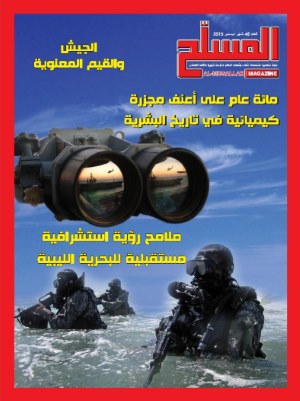

 English
English  العربية
العربية 

